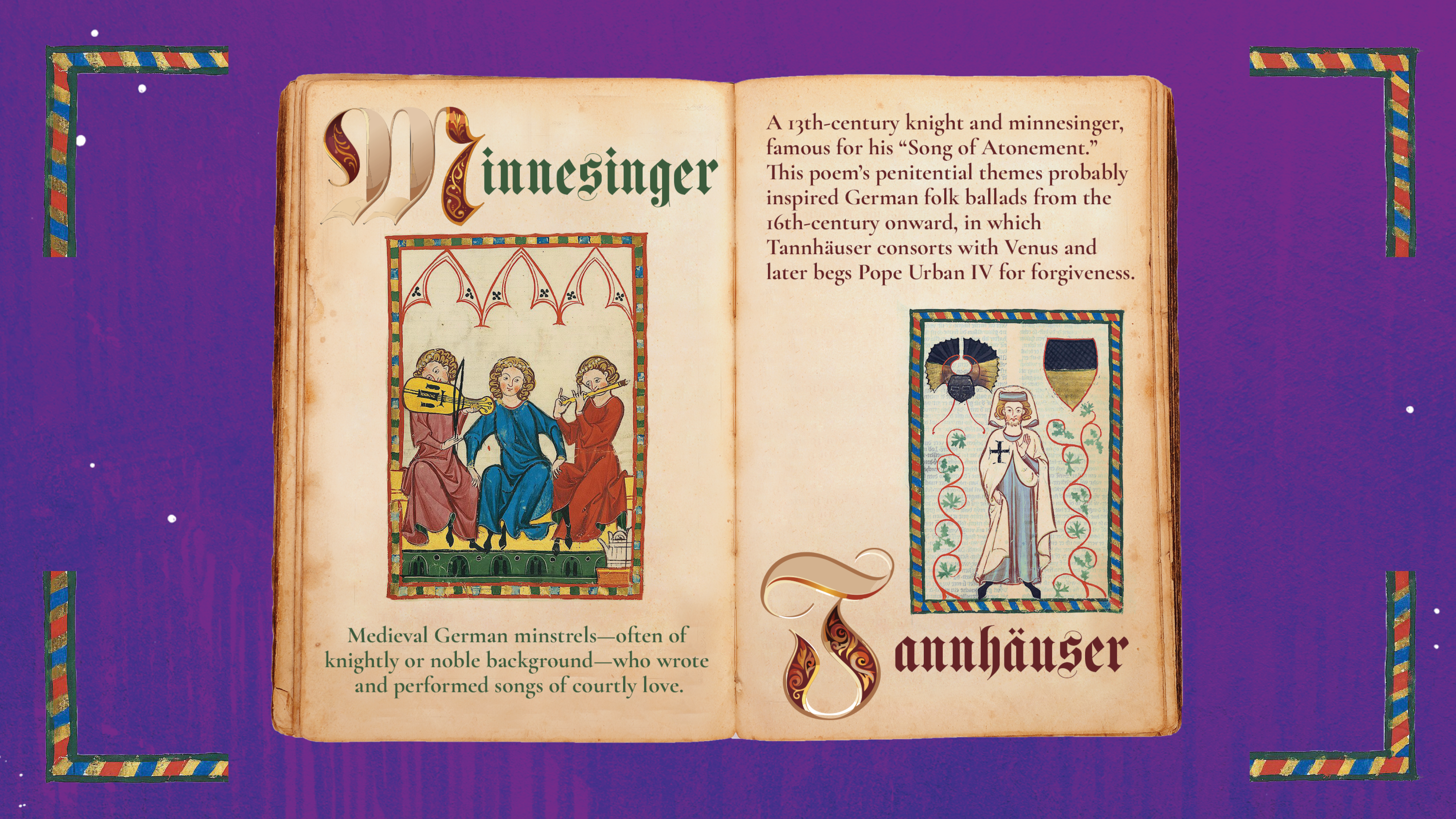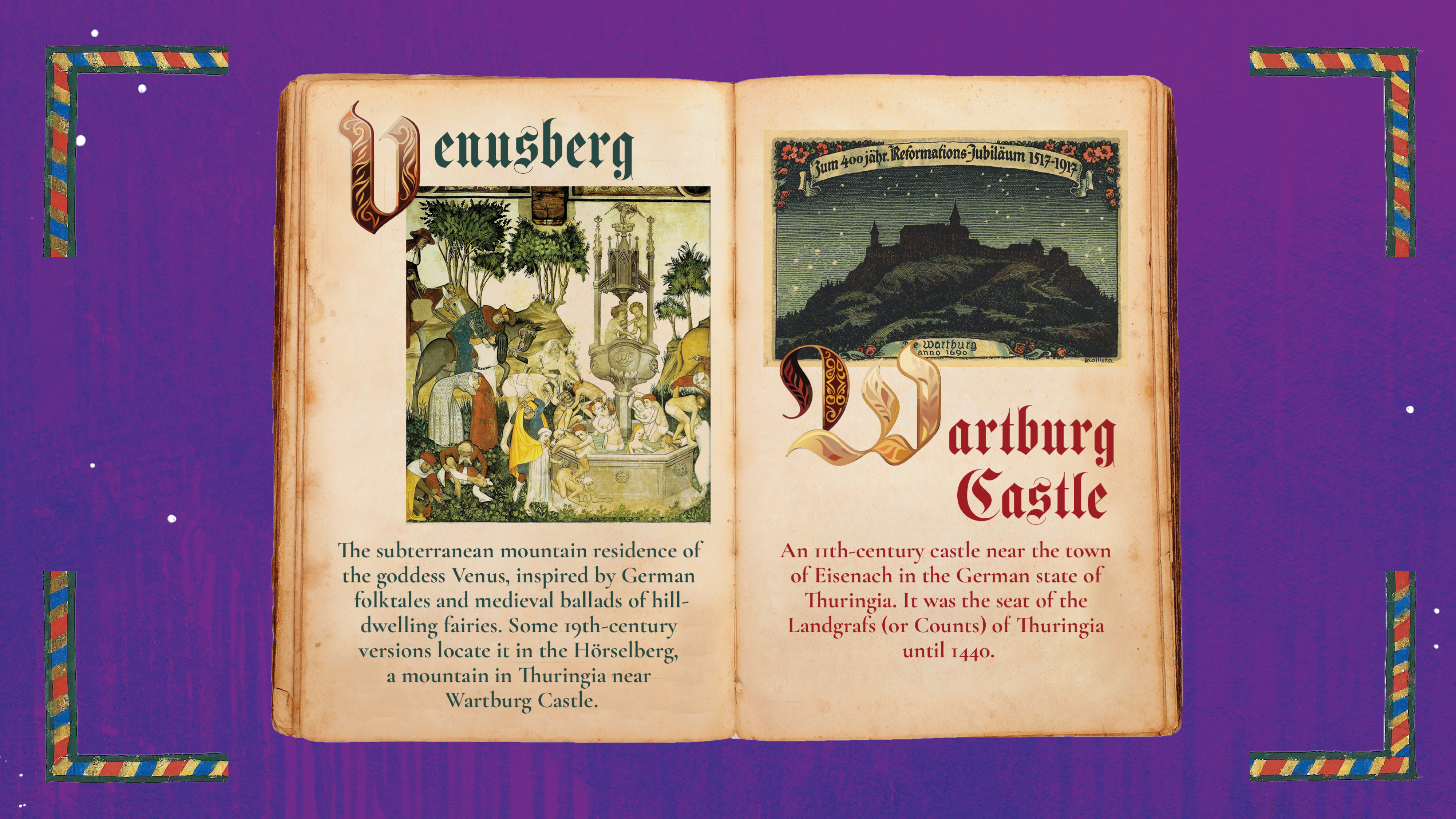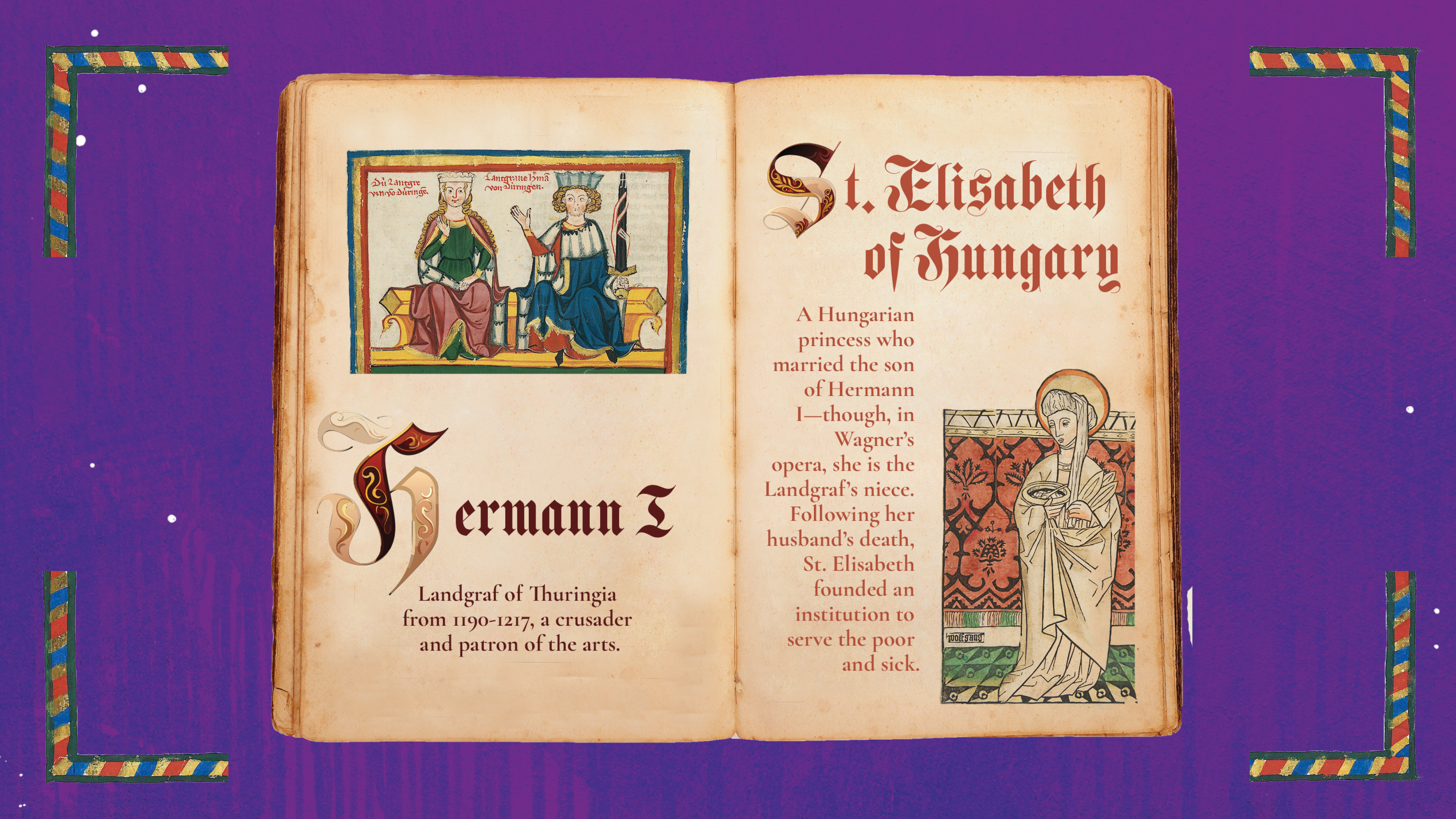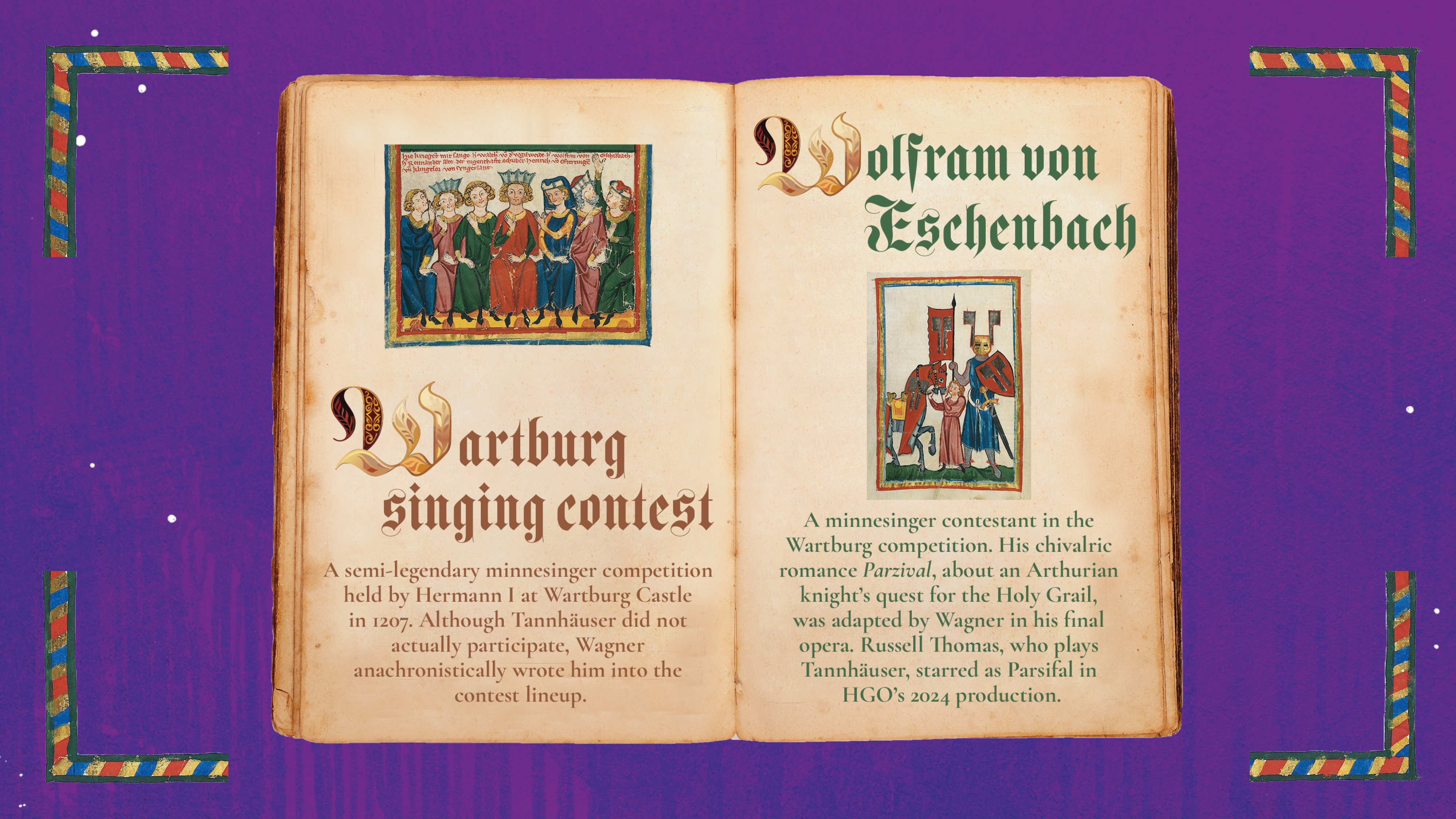Apr. 18, 2025
Wagnerian Myth-Making: The Legendary and Historical Origins of Tannhäuser
The 13th-century minnesinger Tannhäuser, as depicted in the Codex Manesse (ca. 1300)
While Francesca Zambello’s production updates Tannhäuser to turn-of-the-century America, the original 1845 opera is set in medieval Germany. Wagner’s libretto mixes fact and myth—with a few of his own tweaks to the story to make for some good drama. Get familiar with the people and places in the opera, including their historical or legendary origins.

|
Minnesinger
|
Tannhäuser
|
| Medieval German minstrels often of knightly or noble background—who wrote and performed songs of courtly love. | A 13th-century knight and minnesinger, famous for his “Song of Atonement.” This poem's penitential themes probably inspired German folk ballads from the 16th-century onward, in which Tannhäuser consorts with Venus and later pegs Pope Urban IV for forgiveness. |

|
Venusberg
|
Wartburg Castle
|
| The subterranean mountain residence of the goddess Venus, inspired by German folktales and medieval ballads of hill-dwelling fairies. Some 19th-century versions locate it in the Hörselberg, a mountain in Thuringia near Wartburg Castle. | An 11th-century castle near the town of Eisenach in the German state of Thuringia. It was the seat of the Landgrafs (or Counts) of Thuringia until 1440. |

|
Hermann I
|
St. Elisabeth of Hungary
|
| Landgraf of Thuringia from 1190-1217, a crusader and patron of the arts. | A Hungarian princess who married the son of Hermann I—though, in Wagner’s opera, she is the Landgraf’s niece. Following her husband’s death, St. Elisabeth founded an institution to serve the poor and sick. |

|
Wartburg Singing Contest
|
Wolfram von Eschenbach
|
| A semi-legendary minnesinger competition held by Hermann I at Wartburg Castle in 1207. Although Tannhäuser did not actually participate, Wagner anachronistically wrote him into the contest lineup. | A minnesinger contestant in the Wartburg competition. His chivalric romance Parzival, about an Arthurian knight’s quest for the Holy Grail, was adapted by Wagner in his final opera. Russell Thomas, who plays Tannhäuser, starred as Parsifal in HGO’s 2024 production. |